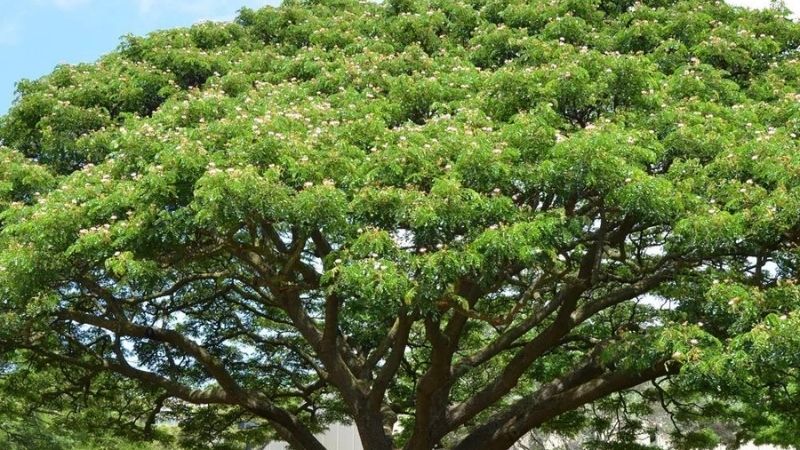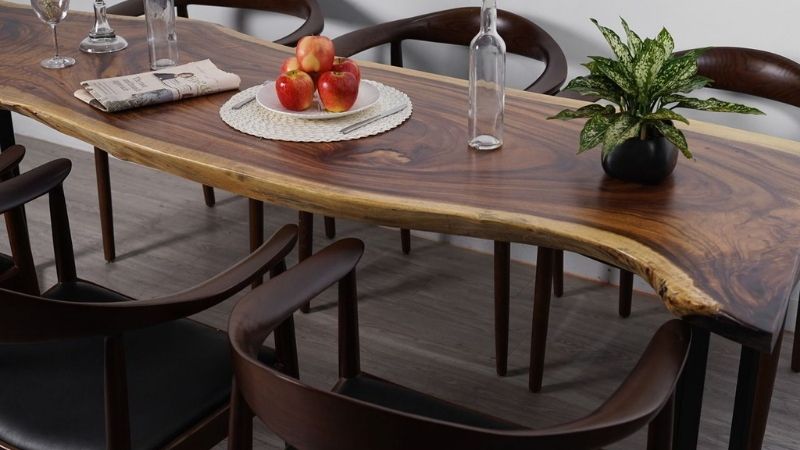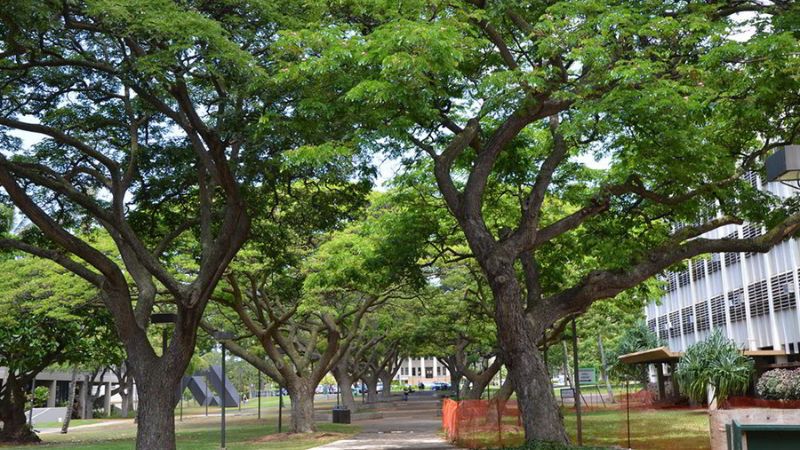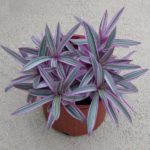The Rain Tree, also known as the Monkey Pod Tree or Saman Tree, is native to tropical regions of the Americas but has since found a home in many parts of the world, including Vietnam and Singapore. In this article, we will explore the history, characteristics, and uses of this fascinating tree and its wood.
1 What is the Rain Tree?
Origin and Significance of the Rain Tree
 What is the Rain Tree?
What is the Rain Tree?
The Rain Tree, scientifically known as Pithecellobium saman, is a member of the Fabaceae family. It is believed to have originated in the tropical regions of the Americas and was introduced to Vietnam around 1876. The tree has since spread to many Pacific islands, including Hawaii and Guam, and is commonly found in Singapore, where it even graced the country’s postage stamps in 2010.
Characteristics and Classification of the Rain Tree
 Characteristics and Classification of the Rain Tree
Characteristics and Classification of the Rain Tree
The Rain Tree is a large, deciduous tree that can grow to impressive heights of 15-25 meters with a canopy spread of up to 30 meters. Its rapid growth rate of 0.75-1.5 meters per year makes it a popular choice for providing shade in public spaces. With proper care, the Rain Tree can be harvested in as little as five years, making it a valuable economic resource.
One of the most distinctive features of the Rain Tree is its bipinnate leaves, which fold together during rain and at night, only opening fully during the day. This unique adaptation makes the tree ideal for street planting, as it provides shade during the day without obstructing streetlights at night.
2 Benefits and Uses of the Rain Tree
 Is Rain Tree Wood Good?
Is Rain Tree Wood Good?
The wood of the Rain Tree is classified as Group VI-6 by the Ministry of Agriculture. While it is relatively light and soft, the wood features beautiful, distinct grain patterns that resemble those of rare and expensive hardwoods. For those who appreciate the rustic style and the look of rare wood, Rain Tree wood is an excellent and more accessible alternative.
Despite not being in the highest-value wood group, Rain Tree wood is highly resistant to termites and weather changes, making it a popular choice for furniture and interior design. It is commonly used for items such as beds, doors, cabinets, and especially tabletops, where its unique grain patterns can be showcased.
Due to its fast growth, easy care, and moderate price, Rain Tree wood is an excellent choice for those seeking quality wood at a reasonable cost. According to experts, Rain Tree wood is only 25% more expensive than Soai wood, twice the price of rubberwood, and 75% more expensive than bamboo-plywood.
3 How to Grow and Care for the Rain Tree
Planting the Rain Tree
Caring for the Rain Tree
- Fertilize once or twice a year with a mixture of 0.1-0.3 kg of NPK, KCL, and other nutrients, increasing the amount as the tree ages.
- The Rain Tree thrives with regular applications of organic fertilizer and proactive pest control.
 How to Grow and Care for the Rain Tree
How to Grow and Care for the Rain Tree
Notes on Growing and Caring for the Rain Tree
- For the best results, focus on intensive care during the first 3-4 years to promote a strong, healthy tree.
- Clear away weeds and grass before watering or fertilizing to ensure the tree receives the full benefit of the nutrients.
- Prune excess branches and protect the tree from pests, animals, and human interference.
4 Five Beautiful Images of the Rain Tree
 The Rain Tree, also known as the Monkey Pod Tree or Saman Tree
The Rain Tree, also known as the Monkey Pod Tree or Saman Tree
 The Rain Tree can be found across many Pacific islands, including Hawaii and Guam
The Rain Tree can be found across many Pacific islands, including Hawaii and Guam
 The wood of the Rain Tree is classified as Group VI-6 by the Ministry of Agriculture
The wood of the Rain Tree is classified as Group VI-6 by the Ministry of Agriculture
 Rain Tree wood is easy to grow and care for
Rain Tree wood is easy to grow and care for
 Rain Tree wood is a cost-effective alternative to rare and expensive hardwoods
Rain Tree wood is a cost-effective alternative to rare and expensive hardwoods
This article has provided a comprehensive overview of the Rain Tree, including its history, characteristics, and uses. We hope you found the information you were looking for and gained a deeper appreciation for this remarkable tree and its wood.































